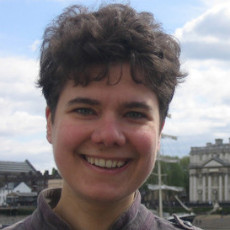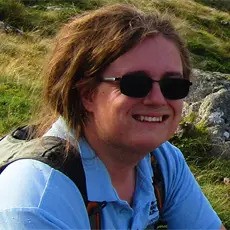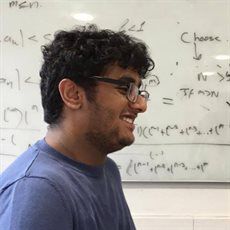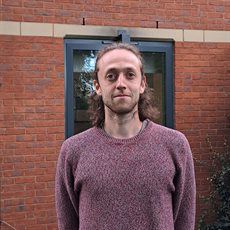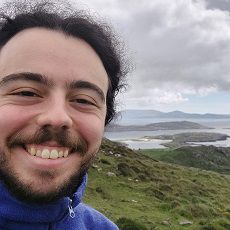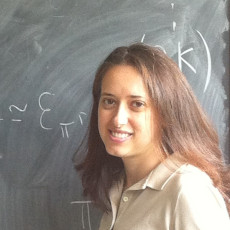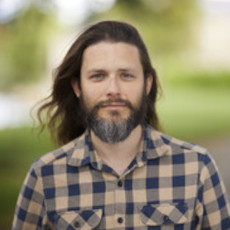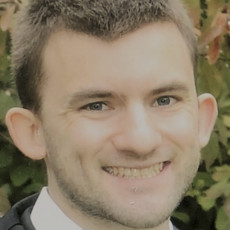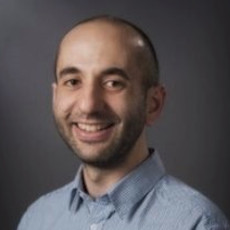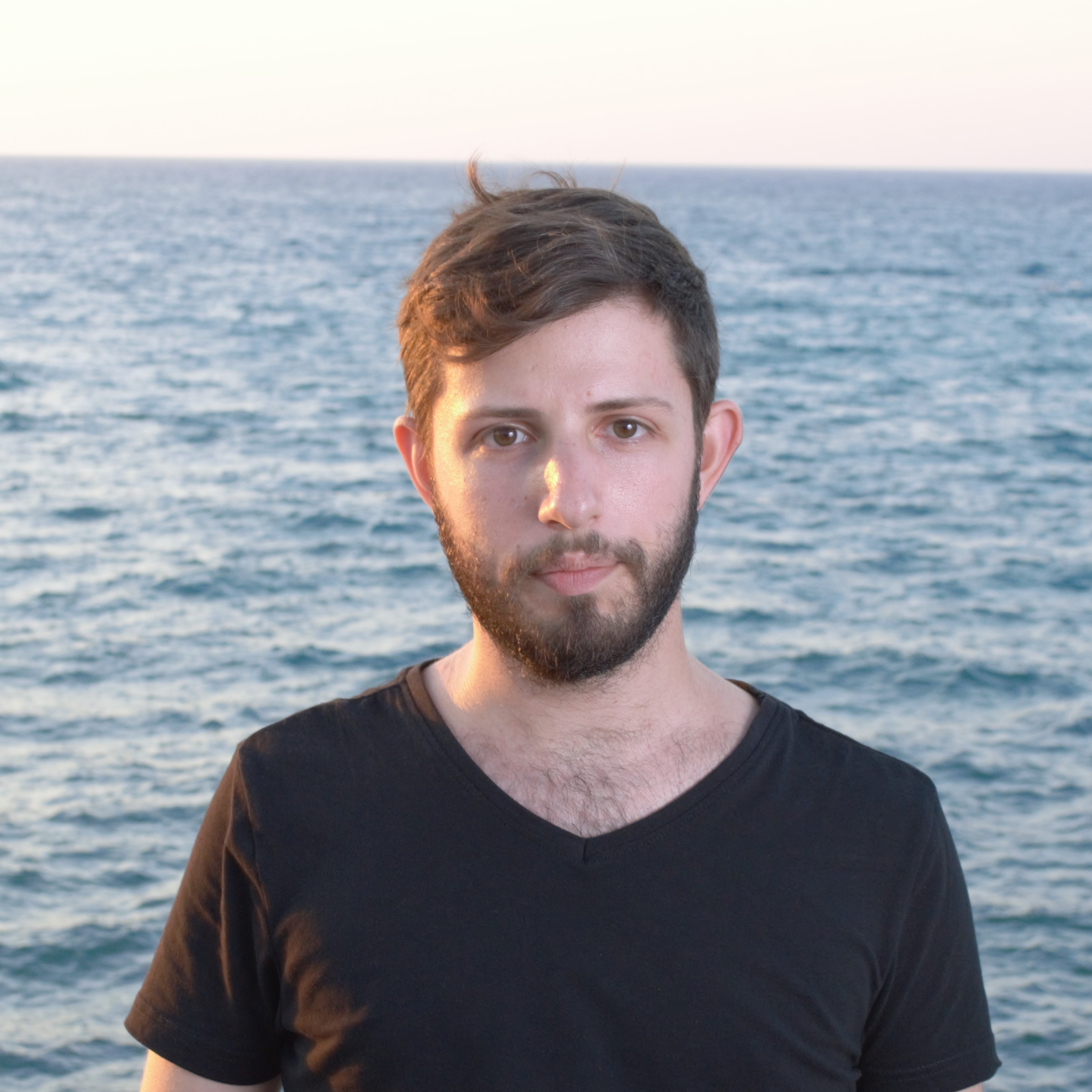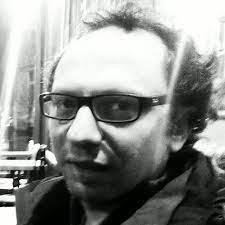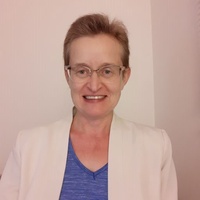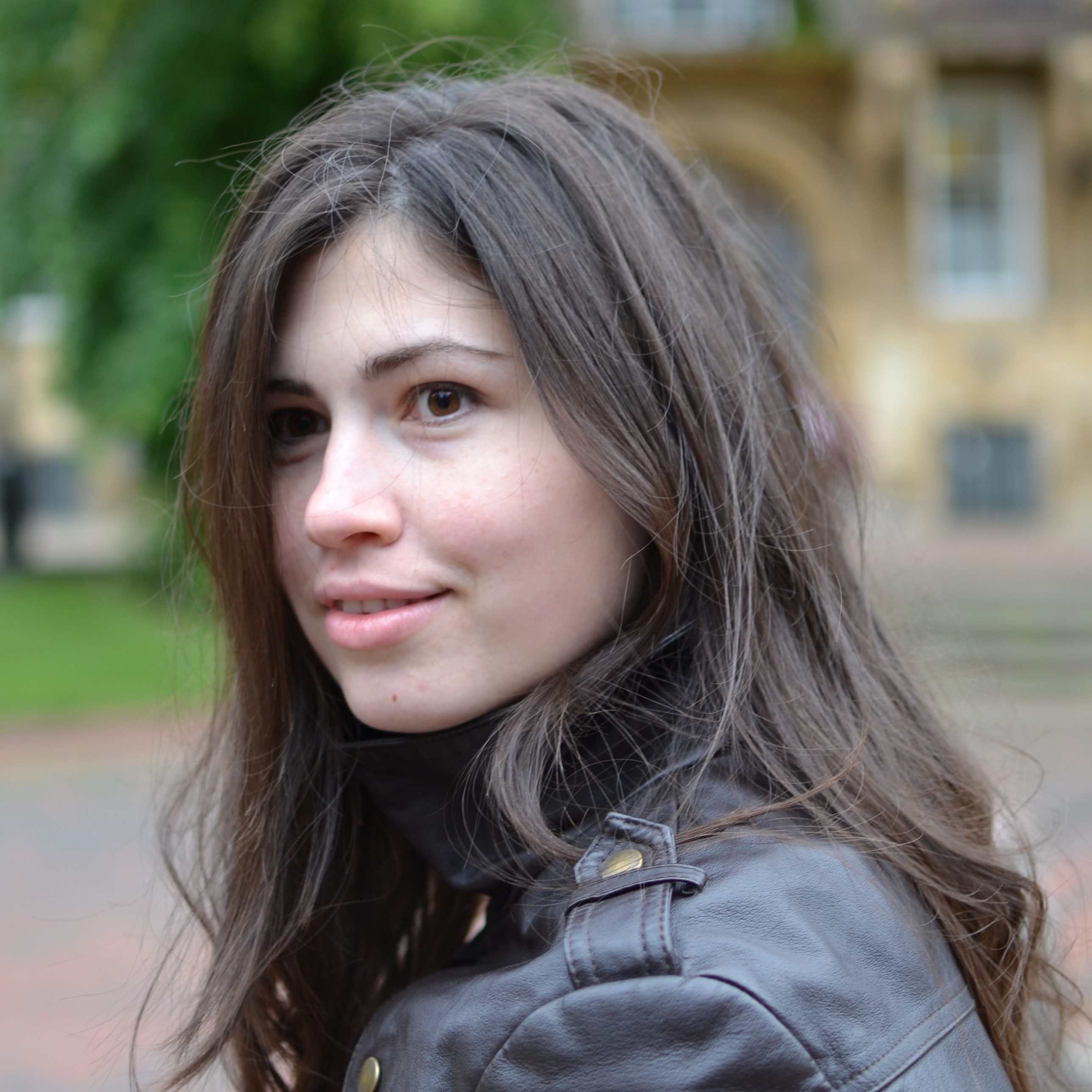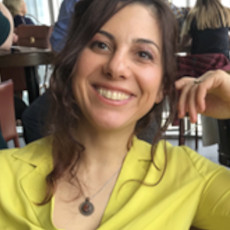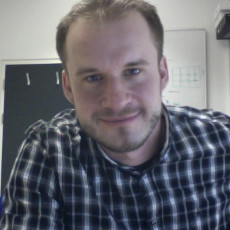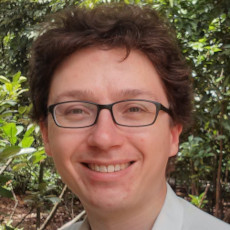Twelfth Symposium on Compositional Structures (SYCO 12)
The Symposium on Compositional Structures is a series of interdisciplinary meetings aiming to support the growing community of researchers interested in the phenomenon of compositionality, from both applied and abstract perspectives, and in particular where category theory serves as a unifying common language. We welcome submissions from researchers across computer science, mathematics, physics, philosophy, and beyond, with the aim of fostering friendly discussion, disseminating new ideas, and spreading knowledge between fields. Submission is encouraged for both mature research and work in progress, and by both established academics and junior researchers, including students.
Submission is easy, with no format requirements or page restrictions. The meeting does not have proceedings, so work can be submitted even if it has been submitted or published elsewhere. You could submit work-in-progress, or a recently completed paper, or even a PhD or Masters thesis.
While no list of topics could be exhaustive, SYCO welcomes submissions with a compositional focus related to any of the following areas, in particular from the perspective of category theory:
- logical methods in computer science including classical and quantum programming, type theory, concurrency, natural language processing, and machine learning;
- graphical calculi including string diagrams, Petri nets, and reaction networks;
- languages and frameworks including process algebras, proof nets, type theory, and game semantics;
- abstract algebra and pure category theory including monoidal category theory, higher category theory, operads, polygraphs, and relationships to homotopy theory;
- quantum algebra including quantum computation, and representation theory;
- tools and techniques including rewriting, formal proofs and proof assistants, and game theory;
- industrial applications including case studies, and real-world problem descriptions
This new series aims to bring together the communities behind many previous successful events which have taken place over the last decade, including Categories, Logic and Physics, Categories, Logic and Physics (Scotland), Higher-Dimensional Rewriting and Applications, String Diagrams in Computation, Logic and Physics, Applied Category Theory, Simons Workshop on Compositionality, Yorkshire and Midlands Category Theory Seminar, and the Peripatetic Seminar in Sheaves and Logic.
This event follows SYCO 1 in Birmingham, SYCO 2 in Strathclyde, SYCO 3 in Oxford, SYCO 4 in California, SYCO 5 in Birmingham, SYCO 6 in Leicester, SYCO 8 in Tallinn, SYCO 9 in Como, SYCO 10 in Edinburgh, and SYCO 11 in Palaiseau.

Invited speakers
Best student presentation

In-person and online participation
While the SYCO experience is best enjoyed in-person, all talks will be livestreamed for virtual participants. However, speakers are expected to present their contribution in person.
The talks will all be livestreamed on the SYCO 12 YouTube channel, and videos of the talks will be uploaded there after the workshop.
Registration
Registration for in-person attendence has now closed. If you would like to participate virtually, you can still register using the SYCO 12 registration form.
Accepted talks
-
Tanguy Massacrier, Philippe Malbos, Georg StruthSingle-set cubical categories and their formalisation with a proof assistant
-
Filippo Bonchi, Alessandro Di Giorgio, Nathan Haydon, Pawel SobocinskiDiagrammatic Algebra of First Order Logic
-
Aziz Kharoof, Cihan OkayHomotopical characterization of strong contextuality
-
Pablo DonatoThe Flower Calculus
-
Flavien Breuvart, Quan Long, Vladimir ZamdzhievOn the Centre of Strong Graded Monads
-
Grégoire Sergeant-PerthuisCompositional statistical mechanics, entropy and variational inference
-
Nathan Corbyn, Lukas Heidemann, Nick Hu, Chiara Sarti, Calin Tataru, Jamie Vicaryhomotopy.io: a proof assistant for finitely-presented globular n-categories
-
Aloïs Rosset, Maaike Zwart, Helle Hvid Hansen, Jörg EndrullisCorrespondence between Composite Theories and Distributive Laws
-
Adrián Doña MateoPushing monads forward
-
Joshua WrigleyA topos-theoretic framework for reconstruction theorems in model theory
-
David ForsmanMonoidal Meta-Theorem
-
Paul B LevyGame-enriched categories
-
Bruno Gavranović, Paul Lessard, Andrew Joseph Dudzik, Tamara von Glehn, João Guilherme Madeira Araújo, Petar VeličkovićCategorical Deep Learning: An Algebraic Theory of Architectures
-
Alexei Lisitsa, Andrew FishAutomated Reasoning for Tangles with Quantum Verification Applications
Schedule
The author marked with an asterisk * will be presenting the talk. All times are in British Summer Time (UTC+1).
Monday 15 April
In this talk I will introduce the ZX-calculus as well as the flow properties, and discuss flow-preserving rewriting and some of its applications.
(Monoidal Meta-Theorem)
Let C be a (cartesian/symmetric) monoidal category and let \(E \cup \phi\) be a (cartesian/symmetric) monoidal theory of universal algebra. Then
\(E \vDash \phi\) in \(\mathbf{Set}\) implies that \(E \vDash \phi\) in \(C\)
This meta-theorem makes a modest connection from algebraic structures in \(\mathbf{Set}\) to monoidally enriched algebraic structures.
In this presentation, we will demonstrate how the theorem of Ahlbrandt and Ziegler can be recovered and generalised by topos-theoretic means, using the representation of classifying toposes by topological groupoids (as in [3] and [4]). We will show that two theories \(T_1\), \(T_2\) with representing groupoids of models are Morita equivalent (which is equivalent to bi-interpretability in the classical context, see [5]) if and only if the representing groupoids \(\mathcal{X}\), \(\mathcal{Y}\) admit a cospan
\(\mathcal{X} \to \mathcal{W} \leftarrow \mathcal{Y}\)
of weak equivalences. The work is based on the author’s PhD thesis [6].
[1] G. Ahlbrandt and M. Ziegler, “Quasi finitely axiomatizable totally categorical theories,” Annals of Pure and Applied Logic, vol. 30, no. 1, pp. 63–82, 1986.
[2] I. Ben Yaacov, “Reconstruction of non-ℵ0-categorical theories,” The Journal of Symbolic Logic, vol. 87, no. 1, pp. 159–187, 2022.
[3] C. Butz and I. Moerdijk, “Representing topoi by topological groupoids,” Journal of Pure and Applied Algebra, vol. 130, no. 3, pp. 223–235, 1998.
[4] H. Forssell, “Topological representation of geometric theories,” Mathematical Logic Quarterly vol. 58, no. 6, pp. 380–393, 2012.
[5] P.A. McEldowney, “On Morita equivalence and interpretability”, Review of Symbolic Logic, vol. 13, no. 2, pp. 388–393 (2012).
[6] J. Wrigley, “Doctrinal and groupoidal representations of classifying topoi,” Ph.D. dissertation, University of Insubria, 2024. Available at: https://jlwrigley.github.io/thesis/thesis_wrigley.pdf
Tuesday 16 April
(Presented at the GALOP 2024 workshop.)
Workshop photos
Photos taken during the workshop can be found on the SYCO 12 pictures page.
Local information
Talks will take place in the Old Gym in room LG10, which can be found on the lower ground floor, down the stairs from the entrance.
Lunches are provided and will take place in the atrium of the School of Computer Science, which is a short walk up the hill from the Old Gym. Coffee breaks will take place in the seminar room.
All the relevant locations can be found on the SYCO 12 map.
Transport
Train
The main railway station in Birmingham is Birmingham New Street, which receives direct services from all over the country including London, Manchester, Oxford, Cambridge, Bristol, Edinburgh and Glasgow. Services from London to Birmingham New Street depart from London Euston, which is a ten minute walk from London St Pancras, the Eurostar terminus. An alternative route from London that some find more pleasant is to travel from London Marylebone to Birmingham Moor Street, which is a five minute walk from New Street.
The university has its own railway station, fittingly titled University. There is a regular service from Birmingham New Street to University, usually departing from platform 12B: look for trains going to Redditch, Bromsgrove, Longbridge, Worcester, Hereford, or Cardiff Central. A word of warning to those who have visited University station before: the station has a new building now and the original entrance/exit is closed for refurbishment, so don't head down to the end of the platform when alighting from the train!
It is often no added charge to extend a ticket to Birmingham New Street to University. On tickets that are not Advance Singles it is fine to 'break your journey' so you are permitted to alight at Birmingham New Street and get back on a train to University later in the day, or vice versa.
Journeys can be planned using the National Rail website. Tickets can be purchased from machines or ticket offices at railway stations, or from train operator websites such as the West Midlands Railway website without paying a booking fee. Purchasing tickets from sites such as Trainline should be avoided as the fares are exactly the same price and a booking fee is added to the cost. Trains can be tracked using Realtime Trains.
Bus
The University is well-served by bus: the National Express West Midlands services X21, X22, 61, and 63 call nearby and stop outside Birmingham New Street at stop NS3.The easiest way to pay for National Express West Midlands buses in Birmingham is to simply tap the card reader by the driver with a contactless bank card when you get on; you do not need to tap off. A single journey is £2 and there is a daily cap of £4.50. Individual tickets can be bought on the bus with contactless card or cash in exact change: ask the driver for a single (£2 for any journey) or a Daysaver (£4.50 for travel all day in the West Midlands). If travelling in a group, a Group Daysaver costs £8 and allows up to five people to travel together on one ticket.
It is possible to follow buses on a map in (relative) real-time using bustimes.org. Google Maps also shows real-time information.
Air
The nearest airport to Birmingham is Birmingham Airport, which has its own railway station called Birmingham International; this is a ten minute direct train ride to Birmingham New Street. There is also a direct rail service between Birmingham and London Stansted Airport which takes about three hours. for the other London airports (Heathrow, Gatwick, Luton, City) it is probably best to travel into London and then onwards to Birmingham, which will take about two hours. Manchester Airport, Liverpool John Lennon Airport, and Bristol Airport are also about two hours to Birmingham.Accommodation
There are plenty of hotels in the centre of Birmingham; we recommend getting one near Birmingham New Street station. There are also many AirBnB places available, especially near Birmingham New Street or Five Ways railway stations, the latter of which is also on the line to University station.Social activities
Pub social
On the evening before the workshop, Sunday 14 April from 17:00, we will gather at The British Oak, a pub in Stirchley. The British Oak is a short walk from Bournville railway station, which is a fifteen minute train from New Street. Alternatively, the 45 and 47 buses stop outside the pub and can be caught from stop NS4 outside New Street station.

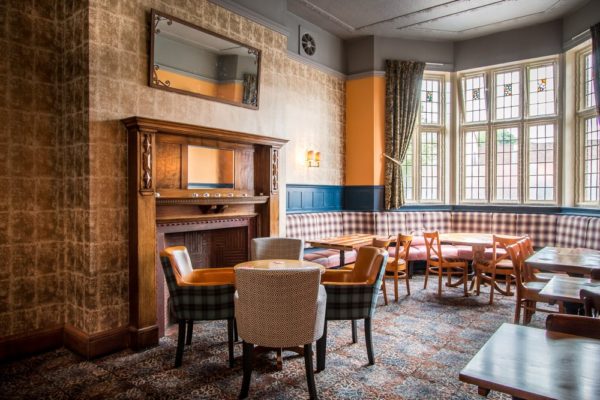
We have booked out the Penn Room, which is on the right side of the pub. From the main entrance, turn left and walk clockwise all the way around the pub. There is also another entrance on the the right side of the building that leads right past the room.
Food can be purchased at the British Oak from burger connoisseurs Original Patty Men; they are open until 19:00 or until their stocks run out, so hopefully they will still be going when we get therer.
Evening meal
On the evening of Monday 15 April from 18:00, we will have a buffet dinner at independent cafe-bar Cherry Reds, at participants' own cost (£14 each). We will be having a selection of the 'Big Red Buffet' and 'All Vegan' platters, the details of which can be found on the Cherry Reds buffet menu. We have booked out the Bosta Room, which can be found by going upstairs and turning left at the top.


Cherry Reds is less than a five minute walk from Birmingham New Street railway station. If you are arriving by train, it can be quicker to walk to the far end of the 'B' end of the platform, go up the very last staircase and turn left. Once you exit the station onto Hill Street, cross the road and continue straight ahead; Cherry Reds will be on your left.
Attendees
Attendees marked with an asterisk * will attend physically.
- Adrián Doña Mateo, University of Edinburgh*
- Alessandro Di Giorgio, University College London*
- Alexei Lisitsa, University of Liverpool*
- Aloïs Rosset, Vrije Universiteit Amsterdam*
- Alöna Litovinskaia
- Amin Karamlou, Oxford*
- Aziz Kharoof, University of Haifa
- Benjamin Rodatz, University of Oxford*
- Brayan Escobar, Universidad Nacional de Colombia
- Bruno Gavranović, Symbolica*
- Bruno da Rocha Paiva, University of Birmingham*
- Calin Tataru, University of Cambridge*
- Carmen Constantin, UCL*
- David Forsman, Université catholique de Louvain*
- Dhurim Cakiqi, University of Birmingham*
- Elena Isasi Theus, Universidad Politécnica de Catalunya
- Elies Harington, Ecole Polytechnique
- Fadi Shawki, OrbitMines*
- George Kaye, University of Birmingham*
- Gordon Plotkin, University of Edinburgh
- Grégoire Sergeant-Perthuis, Sorbonne Université*
- Harsh Beohar, The University of Sheffield*
- Heitor Baldo, University of São Paulo
- Ioannis Markakis, University of Cambridge*
- Jingjie Yang, University of Oxford*
- Joshua Wrigley*
- Jules Hedges, University of Strathclyde / CyberCat Institute*
- Leo Lobski, University College London*
- Maaike Zwart, IT University of Copenhagen
- Marc Thatcher, University of Sussex
- Marco Abbadini, University of Birmingham*
- Mateo Torres-Ruiz, University College London
- Miriam Backens, Inria*
- Morgan Rogers, LIPN
- Nathan Corbyn, University of Oxford
- Nathan Haydon, TalTech
- Nathanael Arkor, Tallinn University of Technology
- Nayan Rajesh, University of Manchester
- Nick Hu, University of Oxford*
- Nigel Burke
- Noah Chrein, UMD
- Paaras Padhiar, University of Birmingham*
- Pablo Donato*
- Piotr Mitosek, University of Birmingham*
- Paul Blain Levy, University of Birmingham*
- Paul Taylor, U of Birmingham (honorary)*
- Paul Wang, ENS Paris
- Poyraz Yılan, Institut Polytechnique de Paris
- Quan Long, ENS Paris Saclay*
- Ramneet Singh, Georgia Tech
- Razin Shaikh, University of Oxford*
- Rich Hilliard
- Sam Speight, University of Birmingham*
- Samuel Knutsen, University of Nottingham*
- Sean Moss, University of Birmingham*
- Tanguy Massacrier, Université Claude Bernard Lyon 1*
- Thibaut Benjamin, University of Cambridge*
- Till Rampe, University of Birmingham*
- Todd Waugh Ambridge, University of Birmingham*
- Tommy McElvanney, University of Birmingham*
- Valeria de Paiva, Topos Institute
- Vincent Rahli, University of Birmingham*
- Wilf Offord, University of Cambridge*
- Yiqi Xu, Universität Stuttgart
- Zanzi Mihejevs*
Local organizers
Local helpers
Programme committee

Steering committee
The symposium is managed by the following people. If you have a general question about SYCO, or if you want to propose to host a future iteration, please get in touch with a member of the steering committee.

Sponsorship
Thanks to Dan Ghica for providing funding from his EPSRC grant, and to Martin Escardo and Sonia Marin for providing funding from the Theory Group's budget. Without their contributions this edition of SYCO would not have been able to go ahead!
